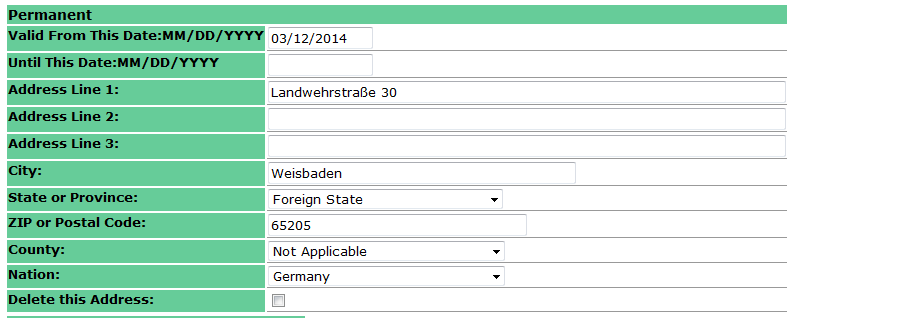

- #Cotse autoexpire address format how to
- #Cotse autoexpire address format manual
- #Cotse autoexpire address format full
If your SMTP server requires authentication, please read Using Gnus Just append the following lines to ~/.profile: export SMTPSERVER= "" Instead of setting the variable smtpmail-smtp-server, you can also specify your SMTP server through the environment variable SMTPSERVER. If your SMTP server uses another port in place of the default 25, specify it through variable smtpmail-smtp-service.

Message-send-mail-function 'smtpmail-send-it Enter the following lines into your Emacs init file or ~/.gnus.el: (setq send-mail-function 'smtpmail-send-it For this I suggest the smtpmail package which comes with Emacs.
#Cotse autoexpire address format how to
To avoid it, substitute machine login your_username password your_pass force yesįor machine login your_username password your_passįinally you must tell Gnus where and how to send outgoing mails. You will probably then wonder why there are so few groups and have no idea what to do now. If your server offers access to anonymous users Gnus will connect as anonymous as well as you specified username and password in. Machine localhost login your_username2 password your_pass2 To avoid repeatedly entering username and password, put the following lines in ~/.authinfo: machine login your_username1 password your_pass1 If a newsserver requires authentification, Gnus will prompt you for username and password when it needs them (which is not every single time, because Gnus records them in memory for a time). (setq mail-sources '((pop :server "" :user "you" :password "secret"))) (add-to-list 'gnus-secondary-select-methods '(nnml "")) (add-to-list 'gnus-secondary-select-methods '(nntp "")) (add-to-list 'gnus-secondary-select-methods '(nntp "localhost")) We tell Gnus all this with (setq gnus-select-method '(nntp "")) Furthermore, you want to read Mails from the POP3 server and use the nnml backend for this (see section mail for further information). Suppose your primary newsserver is, your second one is your local newsserver and the third one is. Gnus must also know where to fetch its messages from.
#Cotse autoexpire address format full
Just append the following lines to ~/.profile: export EMAIL= NAME= "Your Full Name" If you prefer, you can give the same information through the environment variables EMAIL and NAME. Do so with the lines (setq user-mail-address "Your Full Name") The first thing you must do is creating a gnus configuration file. Fundamental Configurationīefore you can actually use Gnus, you must tell it about you and your environment. If the version of Gnus in your Emacs is old, please consider upgrading Emacs. You can find out the latest upstream version of Gnus by searching for “ defconst gnus-version-number” in gnus.el (note that the version number there will sometimes reflect a version of Gnus that hasn’t been released yet). It should say something like `Gnus v5.13’. Within Gnus, type ‘V’ and look at the minibuffer. Gnus is bundled with recent versions of Emacs. You should read through it from the first to the last section, skipping non-mandatory sections you are not interested in. Unlike the Gnus Manual, it may be used as a step-by-step guide to using Gnus.
#Cotse autoexpire address format manual
Also, the Gnus Manual is more of a technical reference than a user guide, so new users often have a hard time finding out how to make Gnus behave as desired. However, all this can make it hard to learn, especially if you are new to Gnus and Emacs. It is highly customizable and extensible. It offers features that other news and mail readers lack. This tutorial introduces Gnus, an Emacs package for reading e-mail and Usenet news (and many other things).


 0 kommentar(er)
0 kommentar(er)
